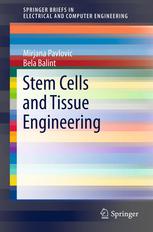

Most ebook files are in PDF format, so you can easily read them using various software such as Foxit Reader or directly on the Google Chrome browser.
Some ebook files are released by publishers in other formats such as .awz, .mobi, .epub, .fb2, etc. You may need to install specific software to read these formats on mobile/PC, such as Calibre.
Please read the tutorial at this link: https://ebookbell.com/faq
We offer FREE conversion to the popular formats you request; however, this may take some time. Therefore, right after payment, please email us, and we will try to provide the service as quickly as possible.
For some exceptional file formats or broken links (if any), please refrain from opening any disputes. Instead, email us first, and we will try to assist within a maximum of 6 hours.
EbookBell Team

4.4
62 reviewsStem cells are the building blocks for all other cells in an organism. The human body has about 200 different types of cells and any of those cells can be produced by a stem cell. This fact emphasizes the significance of stem cells in transplantational medicine, regenerative therapy and bioengineering. Whether embryonic or adult, these cells can be used for the successful treatment of a wide range of diseases that were not treatable before, such as osteogenesis imperfecta in children, different forms of leukemias, acute myocardial infarction, some neural damages and diseases, etc.
Bioengineering, e.g. successful manipulation of these cells with multipotential capacity of differentiation toward appropriate patterns and precise quantity, are the prerequisites for successful outcome and treatment. By combining in vivo and in vitro techniques, it is now possible to manage the wide spectrum of tissue damages and organ diseases. Although the stem-cell therapy is not a response to all the questions, it provides more and more answers every day.
Stem Cells and Tissue Engineering is a concise review on the functional, phenotypic, regenerative, transplantational and curative aspects of a stem cell’s entity. It is critical and encouraging at the same time, providing truthful and appropriate samples from the practice and research that can lead toward optimal use of this immense source of adjuvant and curative therapy in human pathology. Written by a clinician and a researcher, who are currently teaching what they are doing, it is recommended as a teaching tool along with an original textbook.